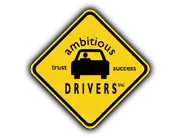Summary: Professional yet cheap driving lessons in Toronto are essential for mastering the city’s complex roads. The guidance of skilled instructors helps learners gain the confidence.
Toronto, with its vibrant urban landscape and bustling streets, has become a hub for aspiring drivers looking to navigate its complex roadways. As the city continues to grow, so does the demand for skilled drivers who can confidently handle its diverse traffic scenarios. This growing need has spurred interest in professional training, leading to a significant rise in searches for “cheap driving lessons Toronto” and “driving instructors Toronto.” These services are pivotal in equipping new drivers with the skills and confidence needed to excel in the ever-evolving driving environment.
Recent Trends in Driving in Toronto
Toronto’s dynamic growth has brought about notable changes in its driving culture. The increasing population density, expansion of public transit systems, and emphasis on eco-friendly transportation are reshaping how people approach driving in the city. New drivers are now navigating a more complex landscape, with higher traffic volumes, changing road layouts, and an increased focus on safety and sustainability.
One of the most noticeable trends is the rise of technology in driving. With advancements in vehicle safety systems and GPS navigation tools, modern drivers are equipped with aids that were unimaginable just a few decades ago. However, these tools, while helpful, require a foundational understanding of driving principles to be used effectively. This is where the expertise of driving instructors in Toronto becomes invaluable.
Additionally, there has been a shift in how people perceive driving lessons. Affordability is becoming a priority for many, especially among students and young professionals. The phrase “cheap driving lessons Toronto” has gained traction, reflecting a growing interest in finding cost-effective yet comprehensive training programs. Affordability, however, doesn’t mean compromising on quality, as driving schools in the city strive to balance competitive pricing with high standards of instruction.
The Importance of Professional Driving Lessons
Learning to drive in Toronto’s unique environment requires more than just theoretical knowledge; it demands practical skills tailored to the city’s specific challenges. Professional driving lessons provide structured training that goes beyond basic driving techniques, focusing on real-world scenarios that drivers are likely to encounter.
Driving instructors in Toronto play a crucial role in preparing learners to handle the city’s bustling streets, diverse traffic patterns, and challenging weather conditions. Their expertise ensures that new drivers develop not only technical proficiency but also the confidence to make quick, informed decisions behind the wheel. Instructors emphasize defensive driving techniques, teaching students to anticipate potential hazards and adapt to dynamic road situations.
Moreover, professional lessons help learners stay updated on the latest road rules and regulations. Toronto’s traffic laws are continually evolving to enhance safety and accommodate the city’s growth. Driving instructors ensure that students are well-versed in these changes, reducing the risk of infractions and promoting responsible driving habits.
How Driving Instructors Shape Confident Drivers
The role of driving instructors in Toronto extends far beyond teaching basic maneuvers. They are mentors who guide learners through the complexities of urban driving, equipping them with the skills and mindset needed for lifelong success on the road. This personalized approach is especially crucial in a city as diverse as Toronto, where each neighborhood presents unique driving challenges.
Driving instructors focus on building foundational skills, such as steering control, braking techniques, and lane discipline. Once these basics are mastered, they introduce students to more advanced concepts, including highway driving, parallel parking, and navigating busy intersections. By gradually increasing the level of difficulty, instructors help learners build confidence at their own pace.
One of the key advantages of working with professional instructors is the opportunity for hands-on experience. In Toronto, this often includes navigating high-traffic areas, understanding the nuances of multi-lane roads, and mastering the art of merging safely. Instructors also prepare students for specific challenges, such as driving in winter conditions or dealing with unexpected road closures, ensuring they are equipped to handle any situation.
The relationship between a student and their instructor is built on trust and communication. Instructors provide constructive feedback, helping learners identify and correct their mistakes without feeling overwhelmed. This supportive environment fosters confidence and encourages continuous improvement, laying the foundation for a lifetime of safe driving.

Choosing the Right Driving School in Toronto
With so many options available, finding the right driving school can feel overwhelming. For those searching for “cheap driving lessons Toronto,” affordability is often a deciding factor. However, it’s essential to consider other aspects, such as the quality of instruction, the reputation of the school, and the qualifications of its instructors.
Reputable driving schools in Toronto prioritize safety and comprehensive training. They employ certified instructors who are experienced in teaching diverse learners, from nervous beginners to those looking to refine their skills. These schools often offer flexible lesson plans tailored to individual needs, ensuring that every student receives personalized attention.
In addition to affordability and quality, location is another important consideration. Choosing a driving school with a convenient location can make scheduling lessons more manageable, especially for those with busy lifestyles. Many schools also offer packages that include both in-class theory sessions and on-road practice, providing a well-rounded learning experience.
The Future of Driving in Toronto
As Toronto continues to evolve, so too will its driving landscape. Emerging trends, such as the adoption of electric vehicles and the integration of autonomous driving technologies, are likely to shape the city’s roads in the coming years. These advancements underscore the importance of staying informed and adaptable as a driver.
Driving instructors in Toronto are already preparing learners for this future by incorporating lessons on eco-friendly driving practices and familiarizing students with advanced vehicle technologies. They emphasize the importance of adaptability, teaching drivers to embrace change while maintaining a strong foundation of safe and responsible driving habits.
Conclusion
Driving in Toronto is both a privilege and a responsibility. The city’s dynamic roads demand skill, confidence, and adaptability, all of which can be developed through professional training. Whether you’re a first-time driver or looking to enhance your skills, the expertise of driving instructors in Toronto is invaluable. By choosing the right driving school, you can gain the knowledge and experience needed to navigate the city’s roads with ease. For those seeking “cheap driving lessons Toronto,” affordability and quality are no longer mutually exclusive. Toronto’s driving schools are committed to providing accessible, high-quality training that empowers learners to become confident, responsible drivers. As the city’s driving culture continues to evolve, these schools and instructors remain at the forefront, shaping the future of driving in Toronto.













